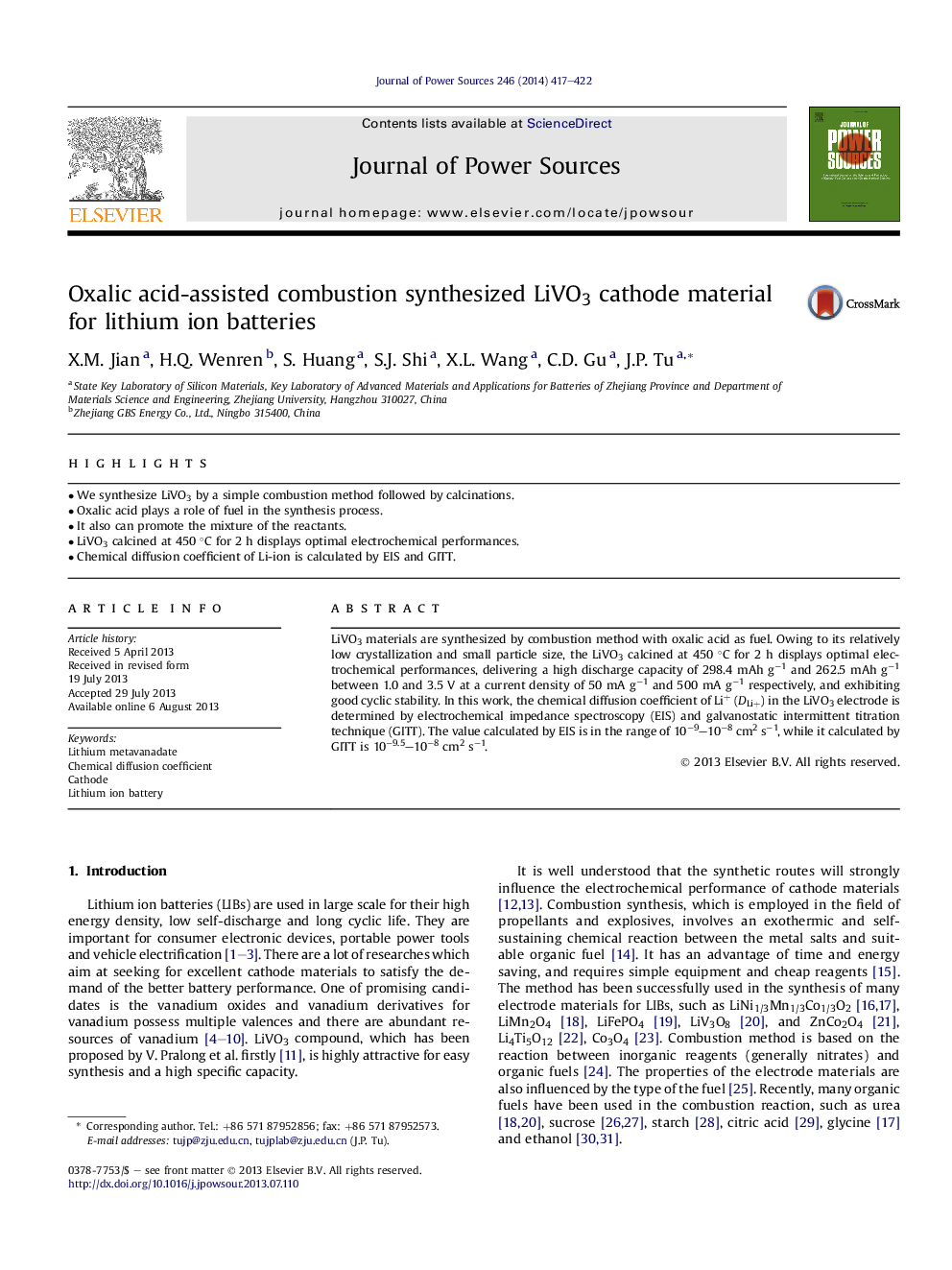| Article ID | Journal | Published Year | Pages | File Type |
|---|---|---|---|---|
| 1284305 | Journal of Power Sources | 2014 | 6 Pages |
•We synthesize LiVO3 by a simple combustion method followed by calcinations.•Oxalic acid plays a role of fuel in the synthesis process.•It also can promote the mixture of the reactants.•LiVO3 calcined at 450 °C for 2 h displays optimal electrochemical performances.•Chemical diffusion coefficient of Li-ion is calculated by EIS and GITT.
LiVO3 materials are synthesized by combustion method with oxalic acid as fuel. Owing to its relatively low crystallization and small particle size, the LiVO3 calcined at 450 °C for 2 h displays optimal electrochemical performances, delivering a high discharge capacity of 298.4 mAh g−1 and 262.5 mAh g−1 between 1.0 and 3.5 V at a current density of 50 mA g−1 and 500 mA g−1 respectively, and exhibiting good cyclic stability. In this work, the chemical diffusion coefficient of Li+ (DLi+) in the LiVO3 electrode is determined by electrochemical impedance spectroscopy (EIS) and galvanostatic intermittent titration technique (GITT). The value calculated by EIS is in the range of 10−9–10−8 cm2 s−1, while it calculated by GITT is 10−9.5–10−8 cm2 s−1.
